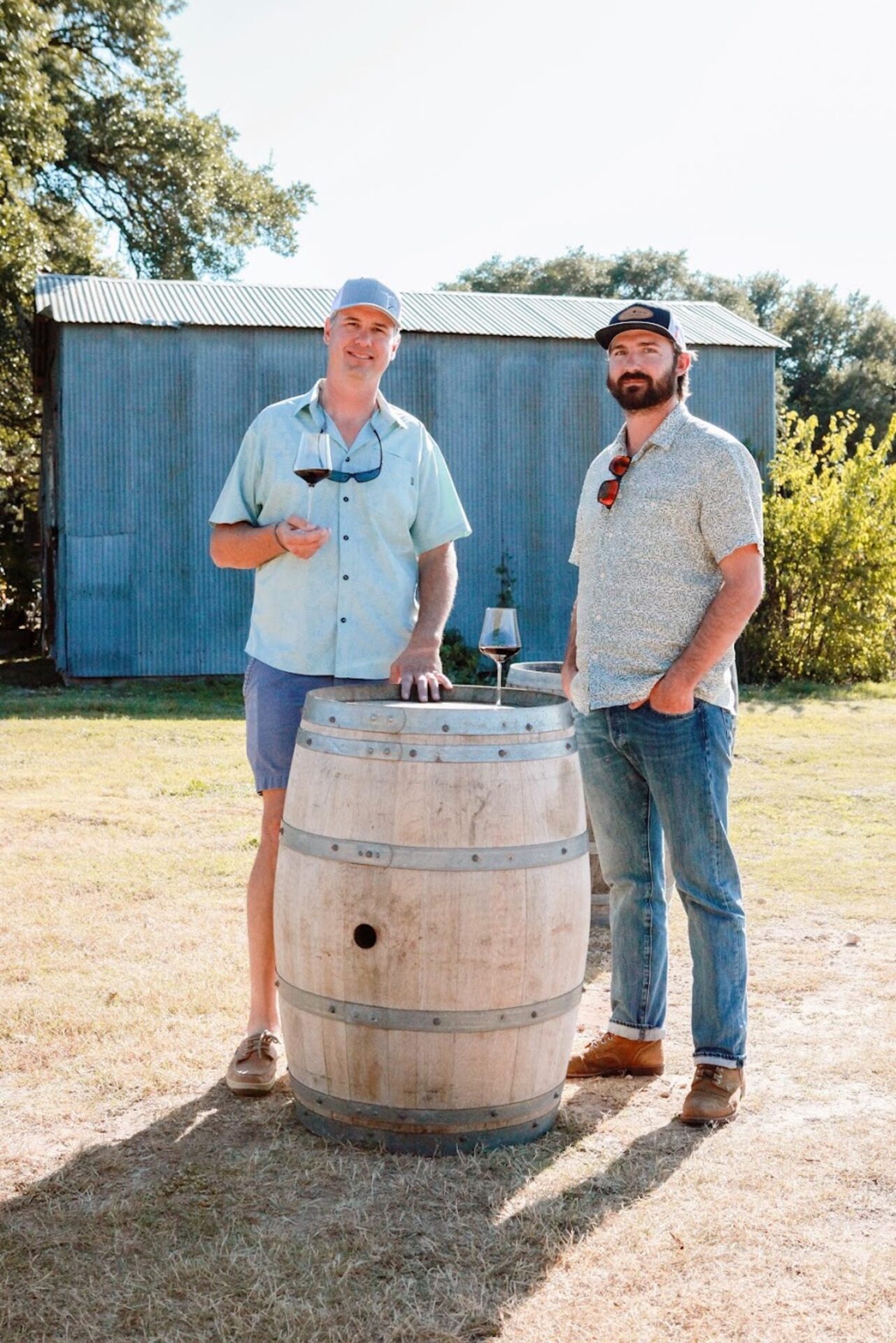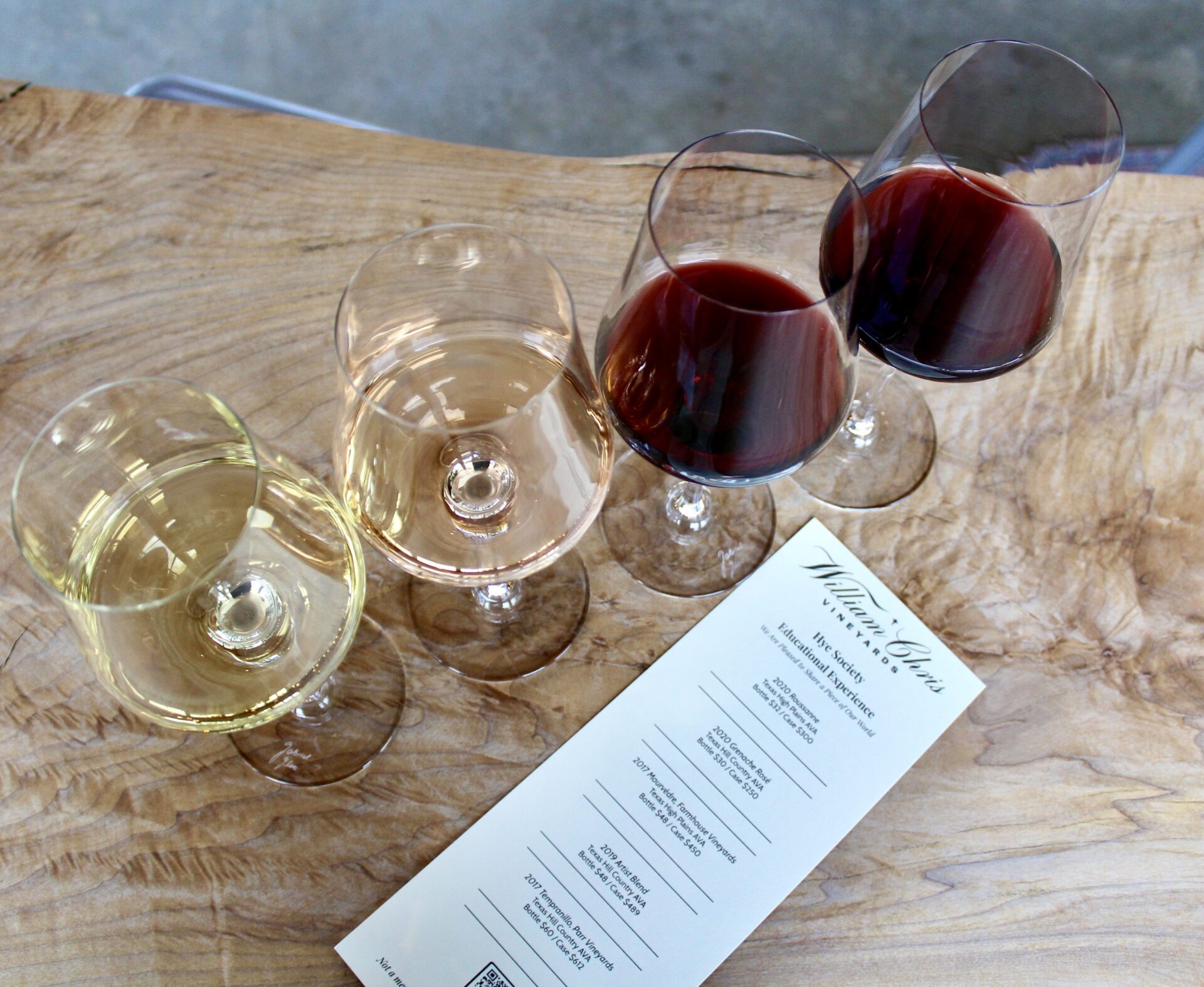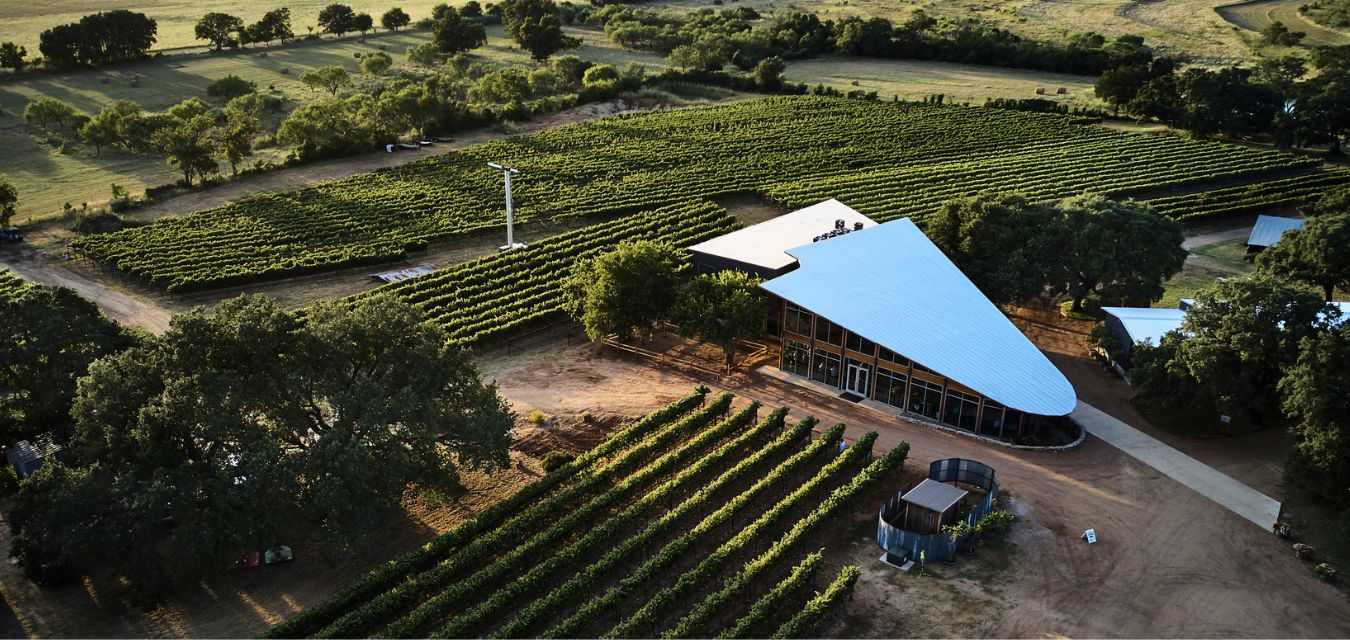With harvest season well underway, it’s a good time to toast the many outstanding winemakers that are growing grapes and producing great wines across the South—especially since October is both Virginia and Texas Wine Month. If you’re in the Texas Hill Country over the next few days, take advantage with a Texas Wine Month Passport. This passport will get you complimentary tastings and exclusive bottle discounts at more than 45 Hill Country wineries. Plus, five dollars from the sale of each passport goes toward the Texas Hill Country Wine Industry Scholarship Fund.
But if a trip to Texas isn’t in the cards right now, many wineries ship. Here’s a look at a few of the winemakers we’re seeking bottles from, this month and beyond. @texashillcountrywine
What We’re Drinking for Texas Wine Month

A parent company to several vineyards in Texas Hill Country, William Chris Wine Company (WCWC) puts an emphasis on supporting a hands-off winemaking approach. Which means each vineyard and grape’s unique characteristics shine in the bottle. Founded by William Chris Vineyards’ Chris Brundrett and Bill Blackmon, as well as Andrew Sides, who owns Lost Draw Cellars. WCWC is the parent company to both wineries, as well as the brands Skeleton Key, Yes We Can, and Grower Project, all of which work with 100-percent Texas-grown grapes. The groups are on a mission to shine a spotlight on small Texas growers, while also honoring those who are working toward natural and biodynamic practices.
Bottles on our List
Lost Draw Cinsault 2020
Coming from La Pradera Vineyard (or the prairie in Spanish) in Fredericksburg, Texas, the Lost Draw cinsault gives you a super-tart, spice-driven mouthful of cranberry and raspberry up front followed a big, mouth-warming finish. A bit of grenache in the blend lends a floral quality, too. Pick this up if you’re looking for an inky, lush wine for the holiday feast.
The Grower Project’s The Source 2019
This collaboration project launched in 2015 as a way to shine a light on farmer-focused wines that are also sustainably minded. This 100-percent sangiovese comes from the Burran and Floyd families who farm Alta Loma Vineyard, which sits at 3,200 feet in the Texas High Plains.
The fruit forward nose hits with undertones of leather and smoke but the sip is light bodied yet complex, with just a hint of pepper on the finish.
William Chris Vineyards Tannat 2019
Tannat is a big, dark grape and when grown in Texas soils, arrives for a bold, dry, earthy wine. You get hit with bit of earth and moss up front, a sign of the low intervention winemaking methods used at the Hye, Texas, vineyard. Decant this one first, then pair with a chicken mole or even a dark chocolate dessert.
William Chris Vineyards Artist Blend 2020
Artist Bella Zaleski’s striking “Vigne Monarque” butterfly design catches the eye, but the juice on this Rhône-style blend offers a similar artistry. The syrah, mourvèdre, grenache, and tannat all lend to the party here—there’s pepper and black fruit, smoke and gaminess, sweetness and spice. Look to this bottle to elegantly stand up to the Thanksgiving table.
More Texas Wines, This Time Organic
By Julia Coney

I first discovered Rae Wilson’s wine during the pandemic and I’m glad I did. The Dandy Rosé was my entry point. A blend of five different grape varieties, it blew me away, but I couldn’t put my finger on why until the second glass. I realized there are so many not-so-great rosés in the marketplace that to find a rosé that had the weight and texture of a light-bodied red intrigued me. The grapes are Rhône varieties but grown in the Texas High Plains. Wilson’s wines reflect her winemaking skills, which were honed in the United States and Portugal where the need to not force or rush the process is a key to the true expression of letting the grapes speak for themselves without manipulating the process. They also produce a La Valentía line and the Sparkling Old Vine Chenin Blanc is worth joining the wine club for.
If Crowson Wines came with an ingredient list, it would contain one item: grapes. This is about as low-intervention as you can get—the wines are often referred to as “zero-zero,” meaning nothing added and nothing taken away. What you see and taste is exactly what you get since Henry Crowson just lets the grapes do what they do, naturally. Their mourvèdre has enough tannins to give it structure and body and the wine is earthy, rich, and juicy with enough weight to pair with a variety of bolder, smokier dishes.
Regan and Carey Meador’s wines are dictated year to year based on what nature is giving each season with minimal interference from the winemaker. This winery originally started out in Long Island, New York, and eventually made its way to Texas. And that’s a good thing. It’s not only a winery, but a farm that is known for legendary sunset dinners. (I highly recommend snagging a reservation.)
The wines have catchy names like Don’t Forget to Soar, Suitably Stunning, and The Devil Makes Three, which is a blend of malbec, cabernet franc, and merlot that all play nicely together. These are small-batch wines and usually sell out quickly.





